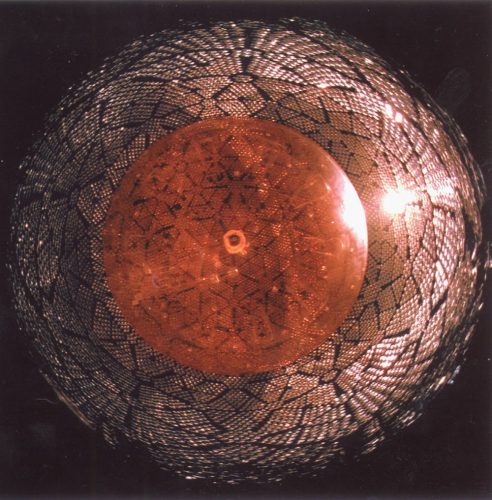In the time it takes you to read this sentence, more than 100 billion neutrinos from the sun will pass through your fingertip. You’re not likely to notice—the neutrino is a tiny, subatomic particle with virtually no mass. It interacts with matter through two of the four fundamental forces of nature: gravity and the weak nuclear force, which causes radioactivity. However, even this gravitational interaction is feeble due to the neutrino’s infinitesimal mass. And yet, despite its imperceptible nature, this elusive particle may be the key to unlocking some of the deepest secrets of the physical universe.
Neutrinos have no electric charge and belong to a class of subatomic particles called leptons. Leptons possess very little mass, do not undergo strong interactions, and are characterized as the building blocks of matter. According to our current understanding of particle physics, there are three “flavors” of neutrino: the electron, muon, and tau neutrino. Each of these uncharged leptons associates with a specific type of charged leptin—the electron neutrino matches with the electron, while the muon and tau neutrinos pair with the electron’s heavier, less stable siblings, the muon and tau particles. Some physicists, however, have hypothesized the existence of a fourth flavor: a “sterile” neutrino that only interacts with gravity, making it difficult to detect.
Recently, measurements from the Daya Bay power plant in China generated excitement over the possibility of sterile neutrinos. Nuclear reactors produce a flow of electron antineutrinos, the antiparticles of electron neutrinos. Physicists can model this flow by understanding the reactions that occur within the nuclear reactors. But at the Daya Bay power plant, these models predicted a higher number of flowing antineutrinos than were experimentally within the reactor. This phenomenon, called the “reactor antineutrino anomaly,” has also been measured at other sites. Neutrinos can spontaneously change flavors in a phenomenon called “oscillation,” so is it possible that some percentage of neutrinos are oscillating into undetectable, sterile neutrinos?
Careful analysis of the data from Daya Bay initially seemed to rule out sterile neutrinos. As nuclear reactors consume fuel, the elemental composition of the fuel changes. Scientists found that the degree of antineutrino deficit varies with the fuel’s composition, thus they suspect that these elemental changes are responsible for the antineutrino anomaly. Specifically, they suspect that isotopes of uranium, forms of the atom with a different atomic mass, are the primary culprits. They believe they are overestimating the number of antineutrinos produced by Uranium, due to the variation between isotopes. However, further analysis has revealed that Uranium isotopes cannot entirely explain the antineutrino anomaly.
Yale Physics Professor and director of Yale’s Wright Laboratory, Karsten Heeger, is currently working on the Daya Bay experiment. “The immediate conclusion people jumped to was, ‘Oh, this might explain everything about the reactor antineutrino anomaly!’” Heeger said. “But it does not. People have now taken a closer look and realized that two effects could be taking place, wrong nuclear physics and sterile neutrinos.” The combined effect of the two theories fits the data better than that of either hypothesis alone, which leads Heeger to believe that multiple causes contribute to the anomaly.

Heeger is now leading a new, Yale-led neutrino experiment called PROSPECT at the Oak Ridge National Laboratory’s research reactor. By using only one isotope in the fuel for the reactor at Oak Ridge, PROSPECT will be able to test nuclear reactor models more precisely. “We can see if over the distance of several meters, these neutrinos oscillate into sterile neutrinos,” he says.
The implications of this research are certain to be profound. “Instead of neutrinos being a byproduct, we’re now starting to see them as a way to probe into nuclear reactions,” Heeger remarked. PROSPECT will hopefully provide data that allows scientists to refine their nuclear reaction models.
PROSPECT also has the potential to transform modern physics: sterile neutrinos are not included in the Standard Model, the theory that describes all known elementary particles. If PROSPECT finds evidence for sterile neutrinos, “It would revolutionize particle physics,” Heeger said. “It would require us to come up with something completely new and different.”
Researchers and students at the Wright Laboratory will complete construction on PROSPECT this fall, and installation at Oak Ridge National Laboratory will take place by the end of the year. Heeger says there may be a definitive answer to the antineutrino anomaly by 2018, but for now, he remains cautious. “I have no predictions,” he said. “We need to get the data.”

